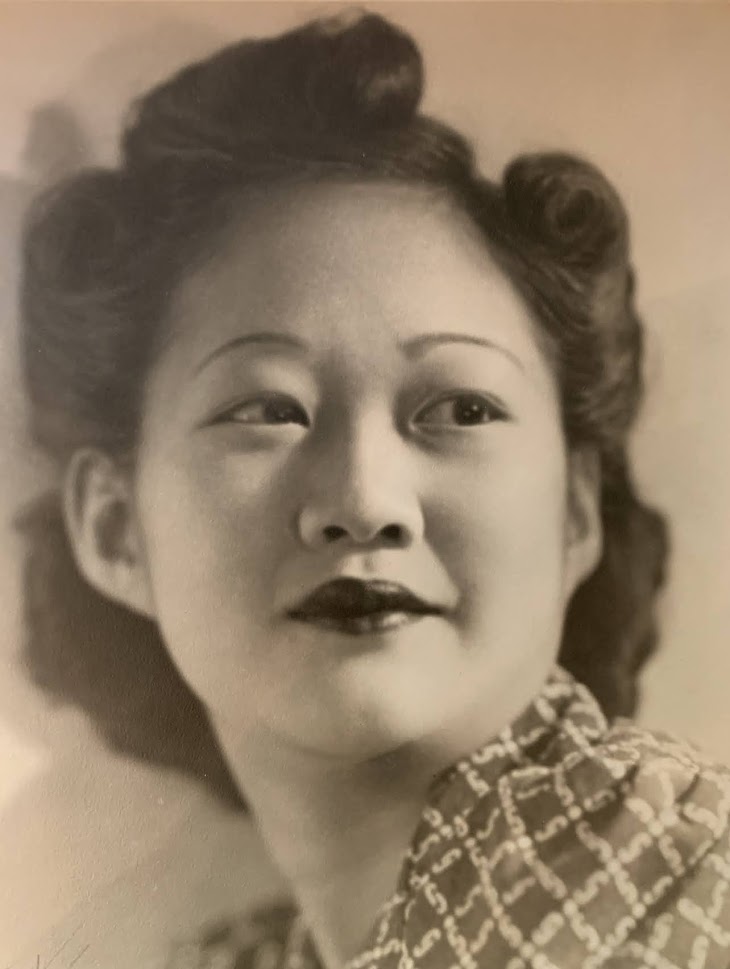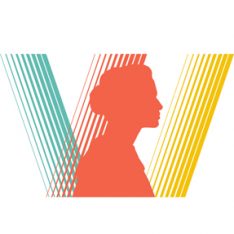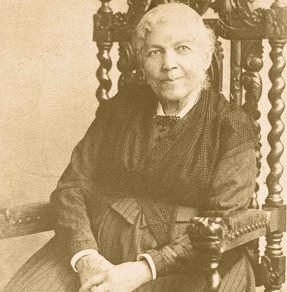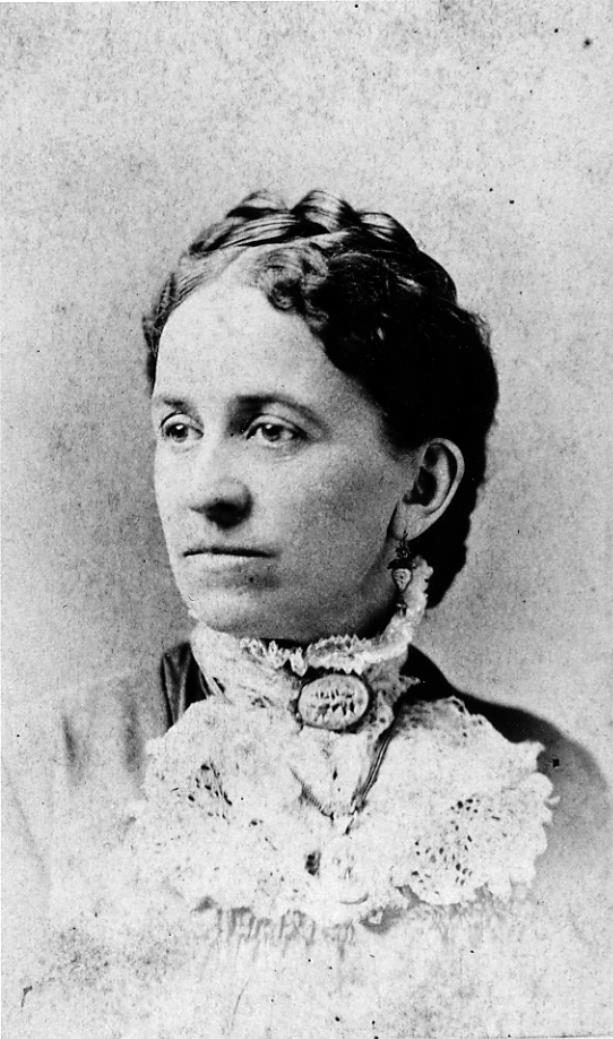At age 68, Mary Parker Converse (1872-1961) was sworn in as a full Captain in the U.S. Merchant Marine, the first woman to hold an Unlimited Tonnage Masters License, in 1940. A Marion resident for years, “Captain Mary” settled in Denver and was granted a commission to teach navigation and seamanship to naval cadets.

I first met my great grandmother Mary Parker Converse (1872-1961) in 1957 when I was eight years old. “Captain Mary” had traveled east from Santa Paula, CA to visit three of her five children who lived in and near Marion, MA. She had been a guest on Garry Moore’s early morning talk show because she had just earned her captain’s papers in the Merchant Marine at the age of 68. We were all glued to the television! While visiting her son Parker Converse and his wife June at the Moorings in Marion, I accompanied my mother to pick her up there and take her for a drive to where we lived on Piney Point in Marion. While sitting in the back seat of the station wagon, I have a crystal-clear memory of her. Gazing at her wearing her captain’s hat, she had an aura of strength, confidence, and independence, together with a spirit of kindness and generosity.
Mary Parker Converse was born Mary Caroline Parker in Malden, MA in 1872. Her parents Anne and John Parker were staunch Baptists; her father was the deacon of Malden’s First Baptist Church. He had become a successful shoe manufacturer, following in his forebears’ footsteps on both sides of the family dating back to the 17th century. Her father was a close friend of Elisha S. Converse, first mayor of Malden, owner of Boston Rubber and Shoe Company, and father of Mary’s future husband Harry. Both the Parker and the Converse families lived on Main Street in Malden. At age 16, Harry worked at his father’s company as a carriage driver and Mary would ride with him on the cart back to the company. During their marriage he let her drive the horse carriage, not a common practice for women in those days.
On December 2, 1891, when she was 18, Harry and Mary were married and settled in Malden. They had five children, three sons and two daughters. Harry continued working for the family business. With a strict religious upbringing, Mary was raised with no alcohol, little dancing and not much theater. Harry on the other hand was raised with less restrictions and was known to enjoy the “spirits.” He loved the theater and became involved with the scene, often supporting a number of plays. Family rumor has it that if he liked a play in Boston, he would invite the whole cast and crew to the Moorings (their future summer home) on occasion for the weekend.
Mary and Harry had been looking for a seashore property to build a summer home and found a beautiful 125-acre property situated in Marion, MA on Buzzards Bay, on the end of the peninsula in the outer harbor called Charles Point, which they renamed Converse Point. A farm with a huge barn was planned with numerous out buildings. They named the property “The Moorings.” In 1898 they spent their first summer there in one of the existing cottages. Mary spent a lot of time in Marion, pursuing music, composing and writing songs. They would often entertain during the summer months. They carried on with their traditional Malden Christmas Eve Musicales at their Marion house, giving out presents with a friend who was dressed as Santa Claus. On August 23, 1901, they hosted a large clambake with over 100 people and it became an annual tradition, eventually held on July 4.

Harry had become an accomplished boatsman and sailor in his youth and at 25 had bought his first yacht, Eugenié. After Eugenié, a few larger yachts followed: Calypso, Penelope and Parthenia. He and Mary, with family and friends aboard, would often sail out of Boston to the north shore and Maine. She often helmed, becoming a skilled skipper with the support of her husband and the captain. She kept up her love of navigation, and sailing from Marion on the Parthenia gave her more time to learn about celestial navigation during their overnight voyages. Harry earned his master’s certificate and pilot’s license. Mary followed suit and earned her second-class pilot’s license for “Steam Vessels” not over 17 gross tons on the waters, Bays, Sounds and Harbors between Gay Head, MA, and Hampton NH, including Buzzards Bay, allowing her to be in command of her 35-footer.
As Marion grew within a short span with a new casino and hotel in 1903 and “the influx of summer people,” sewer and water mains were becoming necessities. The Converses had moved out of Malden and into the Moorings for year-round living. They became active in town affairs. Harry had offered to make a substantial donation to the town for new water and sewer mains and gave the town a new fire engine and hose reel for the fire department. Mary worked in the tiny Saint Gabriel’s Chapel in town and sang in the choir. The Christmas Eve party for the town’s children became a yearly tradition with presents for each child and a light supper of cocoa served with sandwiches, cake and ice cream. Mary kept herself busy in the Marion Women’s Club and helped start the Village Shop and Tea Room. While she had spent the summer of 1910 in Europe taking music lessons and studying with a voice coach, she was pleased to return to see the shop thriving.
By that time, Harry’s drinking, partying, and liaisons with actresses were more apparent. His various solo trips became troublesome, leaving Mary with the children and tending the house. She realized they both needed different things in their lives. By the age of 38, Mary and Harry had separated but never divorced. He had left her a sizable trust fund to care for her living expenses with an adequate staff of servants.
On April 6, 1917 the United States entered World War I. Mary had signed up with the Red Cross Chapter in Boston to the Motor Detachment and became the captain of the whole detachment. She also assembled toiletry kits for regiments overseas. To be sent along with the kits, Mary created a “A Little American Soldiers’ and Sailors’ Diary” and E.P. Dutton and Company printed them. Each page was headed with an inspirational thought or quotation, some written by Mary. The servicemen treasured these kits and diaries.
Mary was honored to have driven Serbian servicemen around Boston. She had suggested to the kit committee to send her “Comfort Kits” to the Serbians and 3000 were sent. After the war she received the Order of the Cross of Mercy from the King of Serbs, Croats and Slovenes “in grateful recognition of your generous support of the Serbian Air Fund for the relief of sick and wounded soldiers, prisoners of war, refuge students, children of the men killed in battle, and aged war mothers.” She treasured that medal as one of her most precious possessions.
On December 8, 1920, Harry Converse died in Marion of heart trouble and complications. By then his company, Boston Rubber and Shoe Company, had been taken over by United States Rubber. Earlier, Mary had spent some time out West with her youngest daughter Mary, who had married there; her oldest son Elisha or “Dooley” had moved to California as well. After Harry’s death, Mary secured a trust for herself and her children. She moved to the Los Angeles area to be closer to Mary and Dooley. She eventually moved to Denver and became active in various organizations there.
In August 1935, Mary rented an apartment in Washington, DC, visiting daughter Mary who had remarried and lived in Warrenton, VA. She began taking instruction on navigation with a naval officer. She found an old friend who agreed to help her find a ship to improve her skills in navigation. He knew the president of the American South African Line and she set up an appointment with him. At first leery of her request, when he learned that she had a pilot’s license, he agreed to arrange her passage on the S.S. Henry S. Grove, sailing from New Orleans on February 2, 1938. She celebrated her 66th birthday on board and found rounding the Cape of Good Hope “the smoothest trip they have ever made.” Despite the rolling of the ship at times, she never became seasick. She wrote a log every day and eventually published it as “113 Days on Iron Decks, A Voyage of Re-discovery.” Later, she wrote, “Strange as it may seem I have not qualms about setting out on a new adventure alone . . . There are always such conflicting emotions when I decide to travel, because I love my home and hate to leave, but when I hear the call of the sea somehow it drowns out every other sound and I yield and set my course seaward. From mountains to sea – how I love them both.”
Mary did set sail again a year later on June 16, 1939, aboard the S.S. Lewis Luckenbach from New York and down to the Panama Canal to San Francisco. She had secured the trip through the influence of Robert Lea of the Sperry Gyrosope Company. She had become interested in the gyro-compass equipment during the winter and arranged a tour of the company. She wrote her log for this voyage and named it “Again we Sail.” She worked on her navigation and was in the pilot house with the captain and crew often. She put up with a good deal of teasing, but she managed it fine and was good natured about it, as the crew was more relaxed and not as formal as on the Grove. On their return to San Francisco, the Captain of the Luckenbach gave Mary rave reviews, saying, “At first when she came aboard, I thought she just wanted to navigate for amusement, but when I found out that she really knew something about it, I let her do the navigating for the whole voyage.” Soon after she left the Luckenbach, she drove to Seattle and was to board the S.S. Dellwood heading to Alaska on July 14.
Mary signed up for the “Master Ocean” course of navigation. There were depositions of friends and captains who sailed with her on the Converse yachts lauding her knowledge for navigation. On September 13, 1940, after sitting for two and a half days of exams, she passed with a score of 90 and was sworn in as a full Captain in the U.S. Merchant Marine, the first woman to hold an Unlimited Tonnage Masters License, at the age of 68. It verified she was a “Master of Steam and Motor vessels of any gross tons, upon the waters of oceans, yachts only” and “if the Queen Mary had been a private yacht, she could have been her skipper.” Mary settled in Denver and promoted the importance of the Merchant Marine in the Midwest. She was granted a commission and taught navigation and seamanship to naval cadets. At one point, she had 125 recruits attending classes in her dining room.
In her 70s and 80s, Mary remained active in her teaching, writing and navigation. She became interested in astrophysics and donated $1000 to the High Altitude Observatory (HAO) in Colorado which made possible the Captain Mary Parker Converse Seminar Room. By the age of 88, her Captain’s License was renewed with the help of Dr. Menzel at the HAO, who proclaimed he could bend the rules a bit for an 88-year-old female yacht captain with 56 great-grandchildren, her official count at Christmas 1960. In August 1961, she became quite ill, and her children came to see her in California. On July 1, 1961, she passed away, but not without leaving an indelible mark through all her accomplishments.
Anne Converse
Information from
-
Converse, Mary Allen. Captain Mary: The Biography of Mary Parker Converse, U.S.M.M. American Merchant Marine Museum, 1987
![[Mary Parker Converse], Photograph, Courtesy: Anne Converse Photograph of Mary Parker Converse in uniform](https://historicwomensouthcoast.org/wp-content/uploads/2023/09/Mary-Parker-Converse-454x454.jpg)




